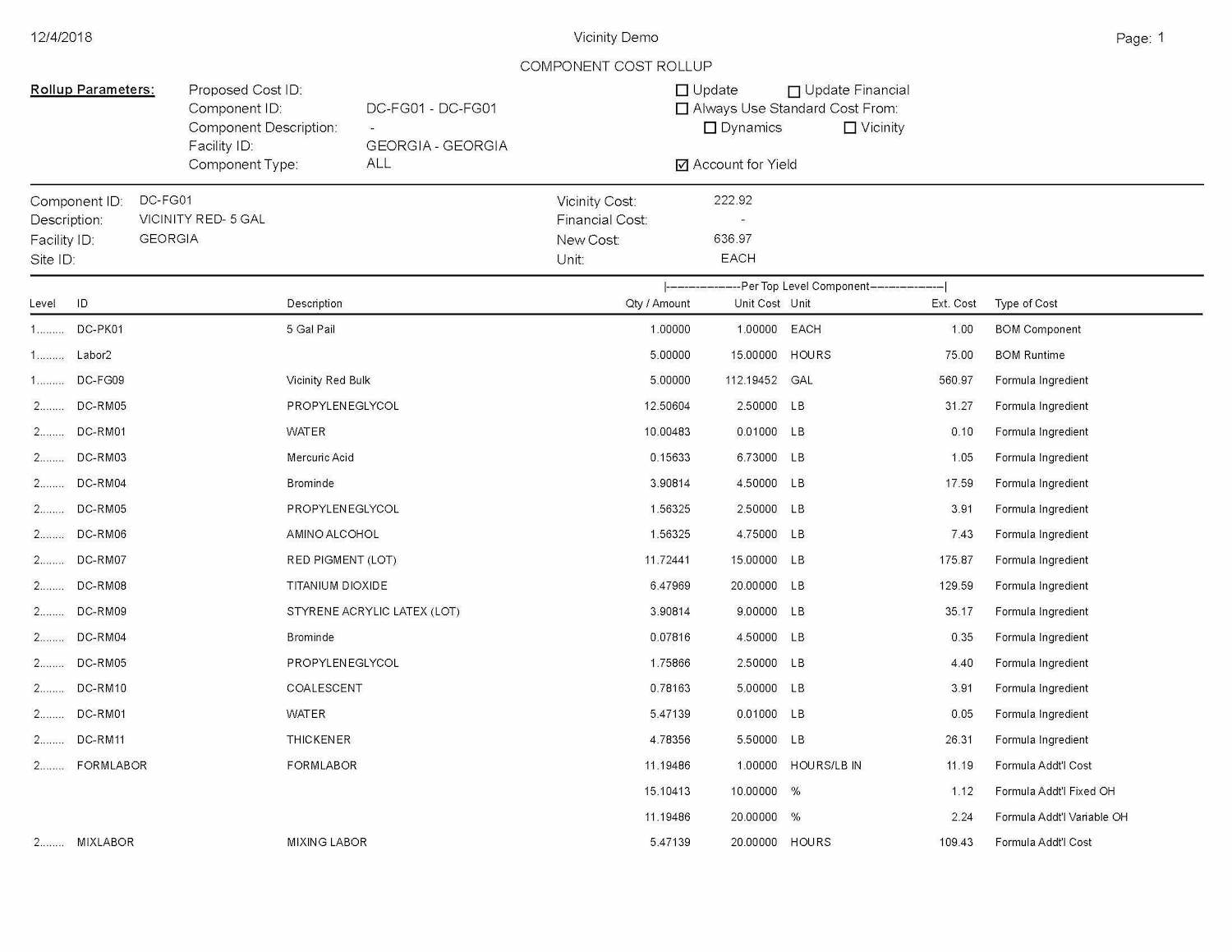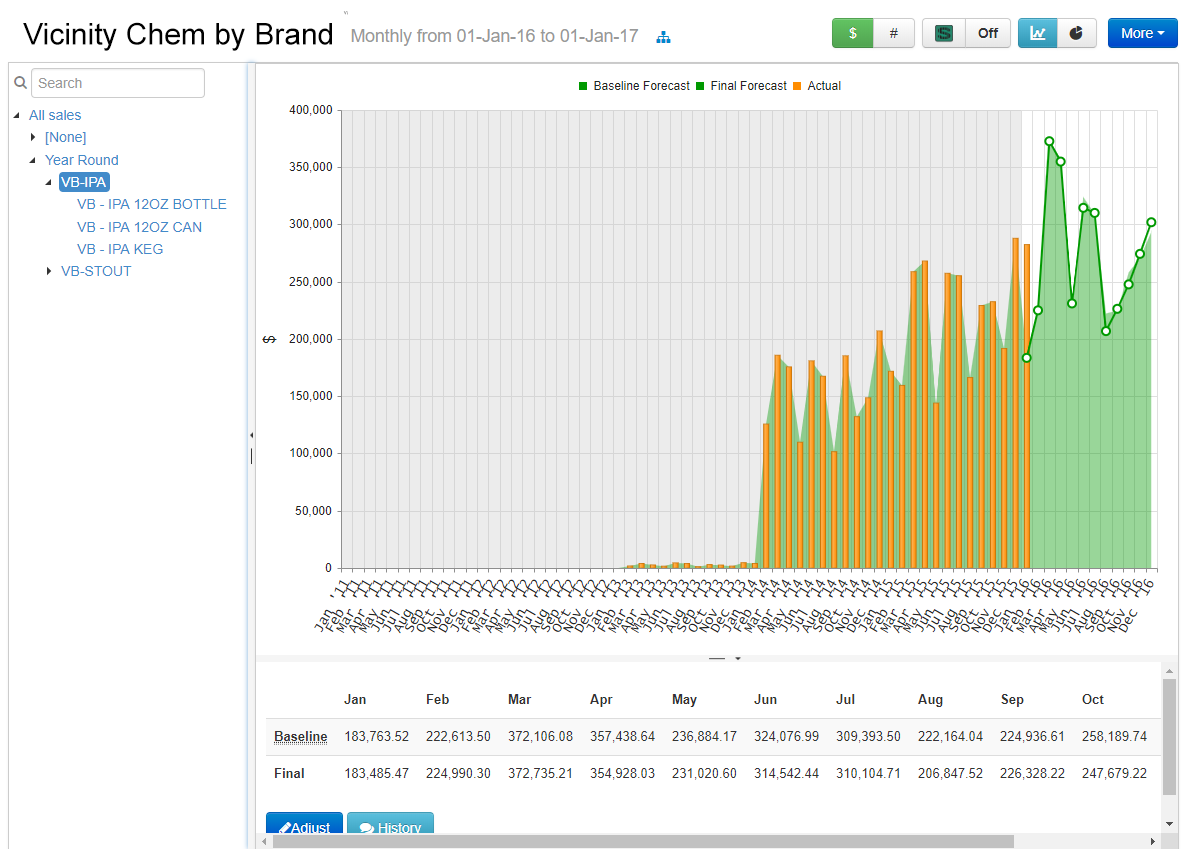Supply Chain – MRP Purchasing System
With VicinityChem, your MRP purchasing system is integrated with the rest of your business. Real-time access to production offers detailed insights and bolsters the feature set accessible to you allowing for informed decision making.
Review Vendor Performance
Do you currently review partner performance based on price, quality, timeliness, and quantities delivered vs. promised?
Chemical manufacturers rely heavily on multiple suppliers for their raw materials. It is essential to know how each supplier compares against the other. Tools are needed to analyze the service provided and leverage this data in routine contract negotiations.
- Store QC results or fundamental values from Certificates of Analysis (COA) to be used in future contract discussions
- Record receiving notes and exception codes for receipts that are non-conforming
- Utilize a contact relationship management (CRM) system to record activities or notes about vendor activities through time. Tracking non-inventory transactions such as site visits, sales calls, status’, etc.
- Implement blanket POs to track standard item contract prices and quantities to ensure the best price is being offered for each product
- Share anticipated usage data and planned orders into the future with suppliers from the MRP purchasing software so they can better manage future purchase requirements
Accurate and Timely Chemical Costs
Does your existing system calculate formula costs using the most up-to-date purchasing data?
Research chemists require up-to-date costs to calculate a reasonable production cost of new products. When a vendor makes a significant change to chemical costs, it can materially change the profitability of a formula. This information should be reviewed regularly using a multi-level cost roll-up tool. Additionally, future price increases should be reviewed before taking effect to determine the future impact on profitability.
- Automatically update the item cost on the item master with each PO receipt and again at the match of the invoice to the receipt
- Analyze the cost of a produced piece by using the component cost roll-up report detailing all expenses included in the production of an item. The inventory cost comes from the updated item master price
- Value inventory in a variety of methods – actual is useful to compare batch tickets results to actual RM costs and standard is helpful to calculate material price variances
- If a single mix produces multiple end items, the costing is more accurate if all produced items are recorded on the same batch. This will spread out the actual cost to all items manufactured and eliminate an arbitrary allocation of intermediate costs to each finished good produced
- Utilize Project Cost functionality to enter anticipated chemical supplier costs and calculate the change in production costs for all formulas. This can be done well before the cost actually impacts inventory, and pricing adjustments can be made for any item affected by the price change
Forecasting
Does your system help to generate a sales forecast, and does it help provide your suppliers with a chemical forecast?
When the term forecast is used, most chemical manufacturers think in terms of the sales forecast used to support the production schedule. That is one form of a forecast. How would your supplier relationship change if you could provide them a reasonably accurate chemical usage forecast? Could this help with chemical availability or reduce the cost of some chemicals? VicinityChem assists in the process of creating a sales forecast based on historical trends and anticipated growth. MRP is then used to generate gross requirements to produce this forecast. If that information was shared with key suppliers, then price and availability negotiation would take a different tone.
- Use sales history by items to determine the sales forecast for items in the future
- Apply growth rates to the sales trending for known changes in the market
- Leverage MRP to calculate the chemicals required to manufacture to the forecast
- Communicate to key suppliers the expected usage so they can use these values in their production planning
- Issues POs based on actual shortages throughout the year
Eliminate Stock-Outs
Does your system tell you in advance when it predicts that you will run out of inventory?
Chemical manufacturers need all the advanced notice they can get of an upcoming stock shortage. Many items are on allocation with vendors or there are long transportation times. Having the system expand the production schedule to drive out demand and notify purchasing of requirements is key to eliminating stock-outs without holding excessive inventory.
- Calculate inventory shortages leveraging the MRP purchasing software, production schedule, master formulas, purchase orders, safety stocks, and inventory positions
- Notify users of future stock positions aggregated by item and by date
- Communicate item, quantity, and date of the shortage to purchase as a proposed purchase order
- Continually evaluate vendor performance for price, accurate quantities, and timeliness of delivery. Each of these affects the effectiveness of the planning data in the system
- Maintain the existing purchase order system and update order dates to reflect changes in delivery dates or quantities





